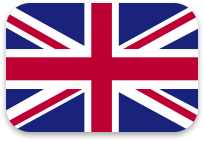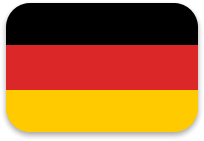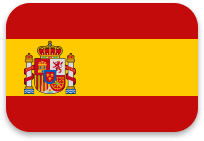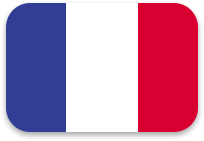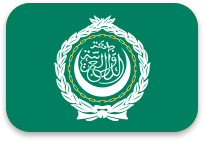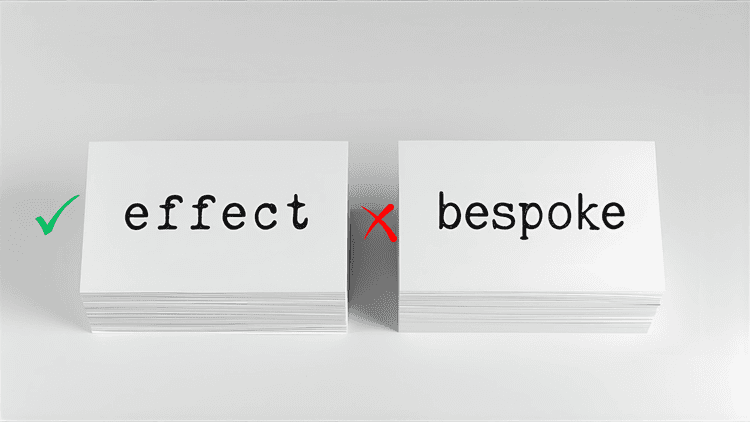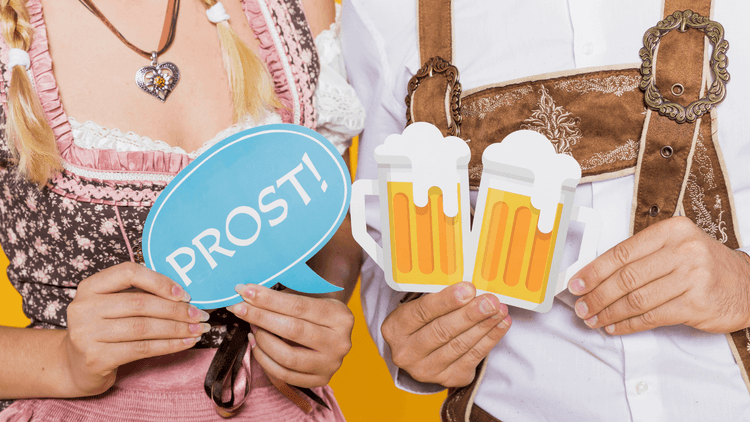Have you ever wondered how Germany's colorful traditions can help you master its language? Dive into German culture through its unique festivities. Learn the history and linguistic nuances that go beyond typical classroom information. Raise a pint with a spirited "Prost" (Cheers!) alongside locals at Oktoberfest or dance around Walpurgis Night bonfires. Enjoy Cologne's Carnival parades, or sing along to the songs during St. Martin's lantern processions. Later, savor velvety Rieslings at Bad Dürkheim's Wine Festival, where vineyard tales flow as freely as the wine.
These are more than holidays for a language learner—they're the gateway to a better understanding of German culture. That's how they naturally acquire new words and idioms while navigating cultural subtleties. After all, language isn't just spoken; it's lived and celebrated.
Heilige Drei Könige / Dreikönigstag (Epiphany - Three Kings' Day)
Date: January 6
Type: Religious holiday (regional public holiday in Baden-Württemberg, Bavaria, and Saxony-Anhalt)
Epiphany is celebrated in several countries, marking the end of the Christmas season. It's a day when all Christmas decorations are taken down. In some parts of Germany, Epiphany is a public holiday. Examples include Baden-Württemberg, Bavaria, and Saxony-Anhalt. The holiday celebrates the Three Wise Men visiting Jesus. Children often dress up as the Three Kings, going from house to house, singing carols.
One tradition on Epiphany is writing CMB and the current year on the door in chalk. The code is a door blessing, and it looks like this: "20*C+M+B*25." There are two versions of what the letters stand for. One is "Christus mansionem benedicat," Latin for "May Christ bless this house." The second version is the initials of the three Wise Men: Caspar, Melchior, and Balthasar.
Another tradition is the "Dreikönigskuchen" (Three Kings' Cake). It's a type of sweet bread shaped like a crown, with an almond or trinket hidden inside. The person who finds the almond receives the title of "king" for the day.
Karneval/Fasching/Fastnacht (Carnival)
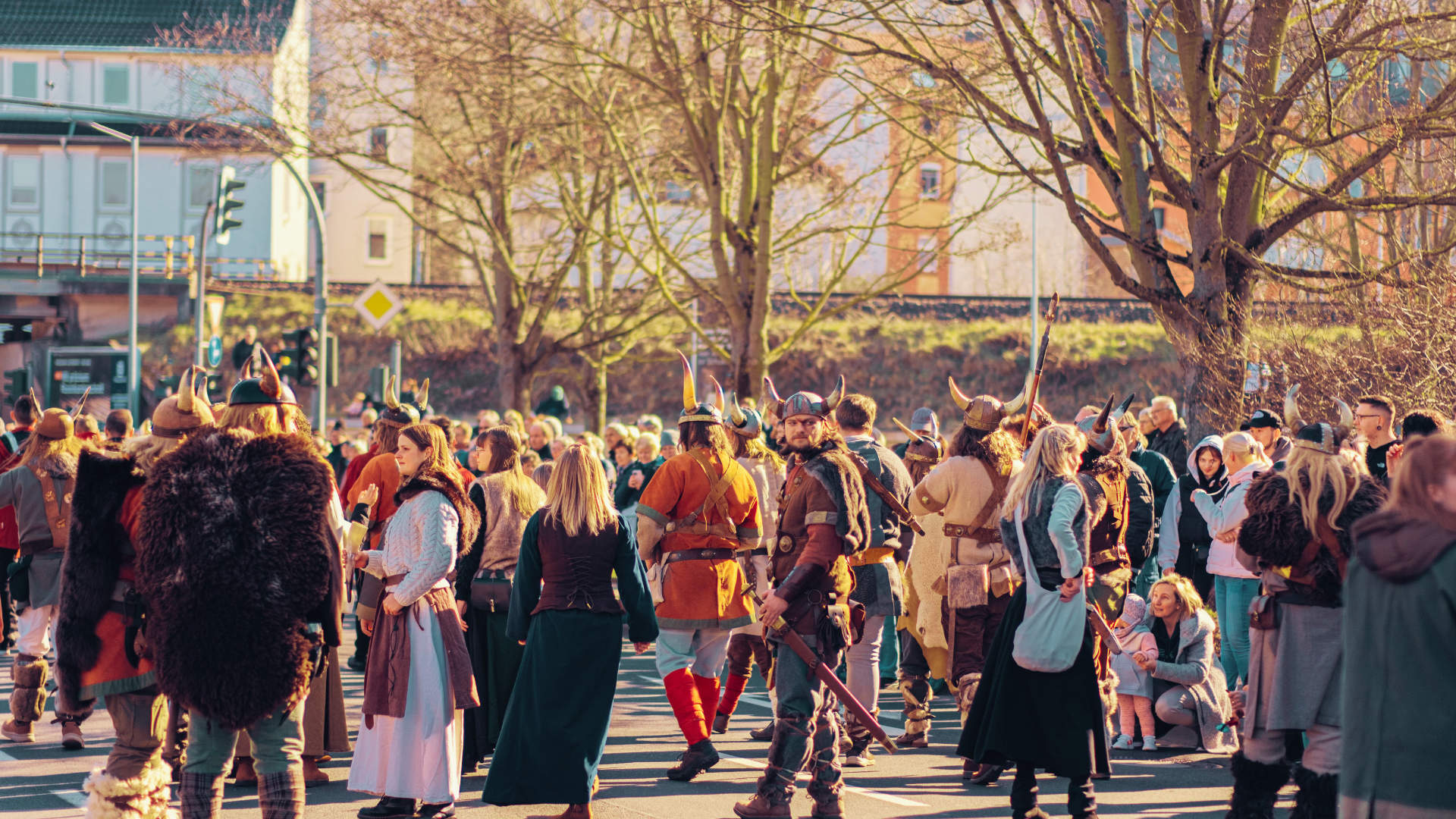
Date: Movable (48 days before Easter, February-March)
Type: Cultural festival (prominent in Rhineland, Swabia, and Bavaria)
The Carnival is an essential pre-Lenten celebration woven with colorful customs for every region. Cologne has a special carnival greeting—"Alaaf." However, one shouldn't confuse it with "Helau" - the greeting in Düsseldorf and Mainz. The Thursday before Ash Wednesday sets off the celebration with a day called the "Weiberfastnacht" (Women's Carnival). One of the customs is for women to cut off men's ties, repaying their deed with a little kiss ("Bützchen"). Women are thought to "take over" the street as a symbol of power reversal.
Street parties with participants wearing costumes create a unique atmosphere. In terms of food, Germans opt for "Faschingsküchlein" (deep-fried doughnuts) and "Krapfen" (similar to doughnuts). Berliner "Pfannkuchen" (jelly-filled doughnuts) are also common delicacies for the Carnival. And, of course, beer is a staple of German festivals.
Karfreitag (Good Friday)
Date: Movable (Friday before Easter)
Type: National public holiday
Good Friday is a more somber celebration. It commemorates the crucifixion of Jesus through religious services and fasting. It is known as a "silent day" or "quiet holiday" ("Stiller Freitag"). That means most states restrict entertainment such as dancing on this day. However, the specific timeframe for these restrictions varies by region. For instance, Bavaria has a longer ban than Berlin.
Good Friday is the perfect time to pray, reflect on Jesus's sacrifice, and rest during the long weekend. Churchgoers attend the afternoon service and eat fish instead of meat on this day.
Walpurgisnacht (Walpurgis Night)
Date: April 30
Type: Traditional celebration
Celebrated the night before May 1, Walpurgisnacht comes from pagan rituals and Christian traditions. Legends say witches used to gather on the Brocken peak of the Harz Mountains. Following the tradition, people wear costumes, hold parades, and light up bonfires to chase evil spirits away. Walpurgis Night celebrates revival and traditions.
Local festivals are common in the north of the country. In the southern areas, there are fewer bonfires, but you can still notice a few spring rituals.
Rhein in Flammen (Rhine in Flames)
Dates: May-September (specific weekends in Bonn, Rüdesheim, etc.)
Type: Cultural event
As the name suggests, Rhine in Flames is a fireworks festival along the Rhine River. The event spans over five summer evenings between May and September. The festival attracts thousands of visitors yearly, including tourists. The event's highlight is the fireworks display accompanied by music and firecrackers. They go off from different parts along the Rhine, creating a magnificent display.
On the river itself, illuminated boat parades pass along, offering the best view of the fireworks. Koblenz boasts the largest parade, counting over 60 ships. On top of that, the riverbanks display thousands of red Bengal lights. The riverbank also features parties, music, food, and drinks.
Oktoberfest
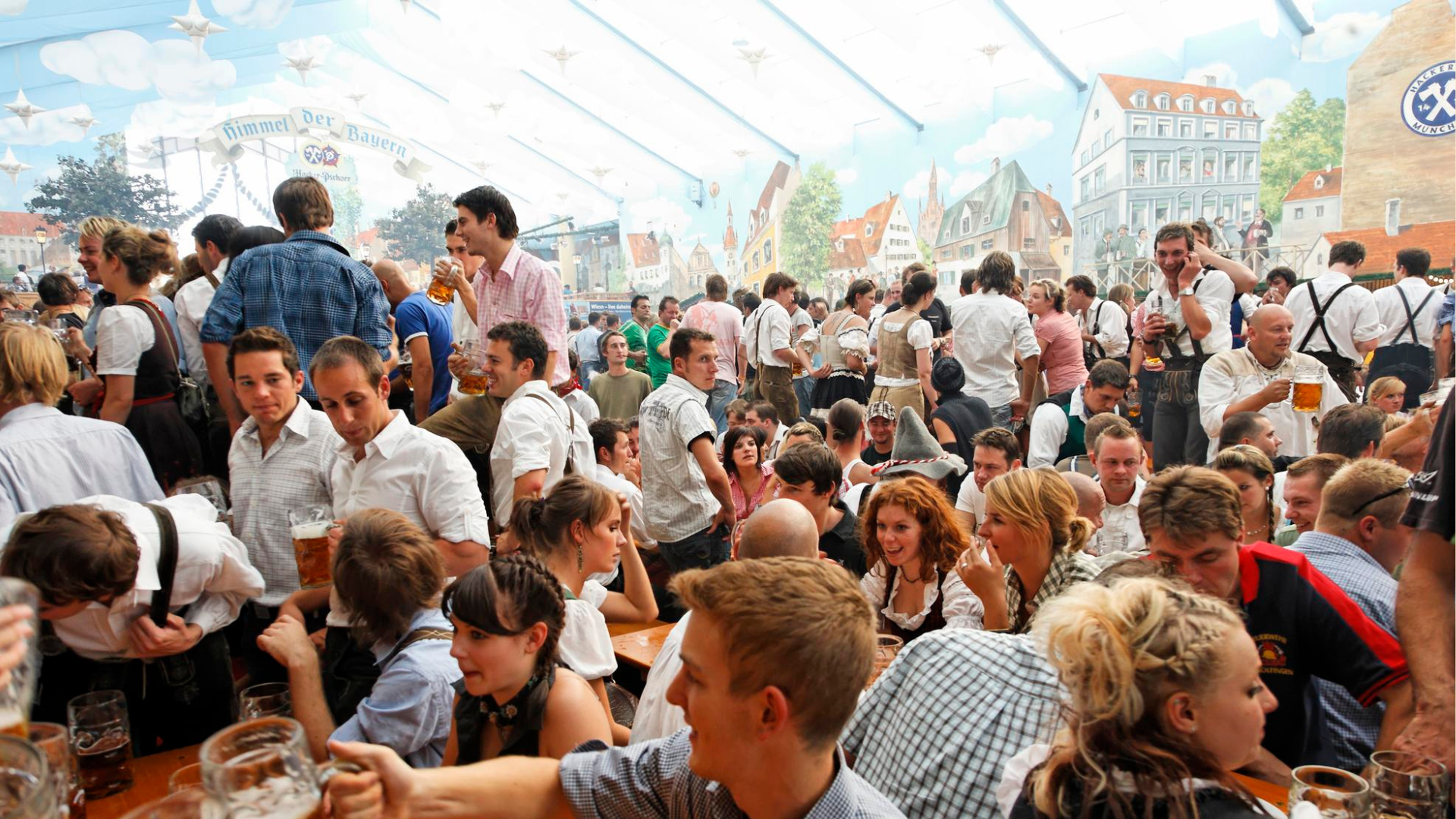
Dates: Late September–early October (16–18 days, ending the first Sunday in October)
Location: Munich, Bavaria
Type: Cultural festival
Oktoberfest is one of the most famous festivals in the world and the largest beer festival. It dates back to 1810 to celebrate the marriage of Crown Prince Ludwig to Princess Therese of Saxony-Hildburghausen. Although it was first organized in October, most of the event takes place in September nowadays.
Oktoberfest is a symbol of Bavarian culture and identity. The central theme is the German concept of "Gemütlichkeit," standing for comfort. It's a time for communities to bond through music and celebration.
The celebration starts with the Mayor of Munich tapping the first keg of Oktoberfest beer. Traditionally, they state, "O'zapft is!" ("It's tapped!"), which is a cue for the 12 guns to launch a salute and serve beer to the Minister-President of Bavaria.
The festival hosts large beer tents, where visitors can taste traditional Bavarian beer and food while enjoying the music. Typical food includes "Bratwurst" (a type of German sausage), "Schweinshaxe" (pork knuckle), "Hendl" (roast chicken), "Brez'n" (pretzels), and others. The popular German toast "Prost!" (Cheers!) accompanies the clinking of beer pints. Some popular chants are "Oans, zwoa, drei, g'suffa!" ("One, two, three, drink!") and "Ein Prosit der Gemütlichkeit!" (A toast to Gemütlichkeit!).
Note: Oktoberfest is celebrated in Brazil, Canada, the United States, Australia, China, and Japan.
Cannstatter Volksfest (Stuttgart Beer Festival)
Dates: Late September-October
Type: Cultural festival
Known as the second-largest beer festival after Oktoberfest, the Stuttgart Beer Festival is an annual event organized on an extensive territory in the Bad Cannstatt district. It is held from late September to early October. It originated as an agricultural festival, celebrating the people's resilience during famine.
"Fruchtsäule" (The Fruit Column) is decorated with fruits and vegetables in a traditional agricultural theme style. It is a central symbol of the festival. Other than that, visitors enjoy cultural events, live music, and entertainment.
Many people confuse Cannstatter Volkfest with Oktoberfest. Let's see what sets them apart. Just like Oktoberfest, Cannstatter Volkfest features large beer tents. However, the theme of the ones in Stuttgart is more rustic or Alpine. On top of that, the parade displays colorful floats. In contrast, Oktoberfest keeps to the traditional Bavarian style.
Dürkheimer Wurstmarkt (Bad Dürkheim Wine Festival)
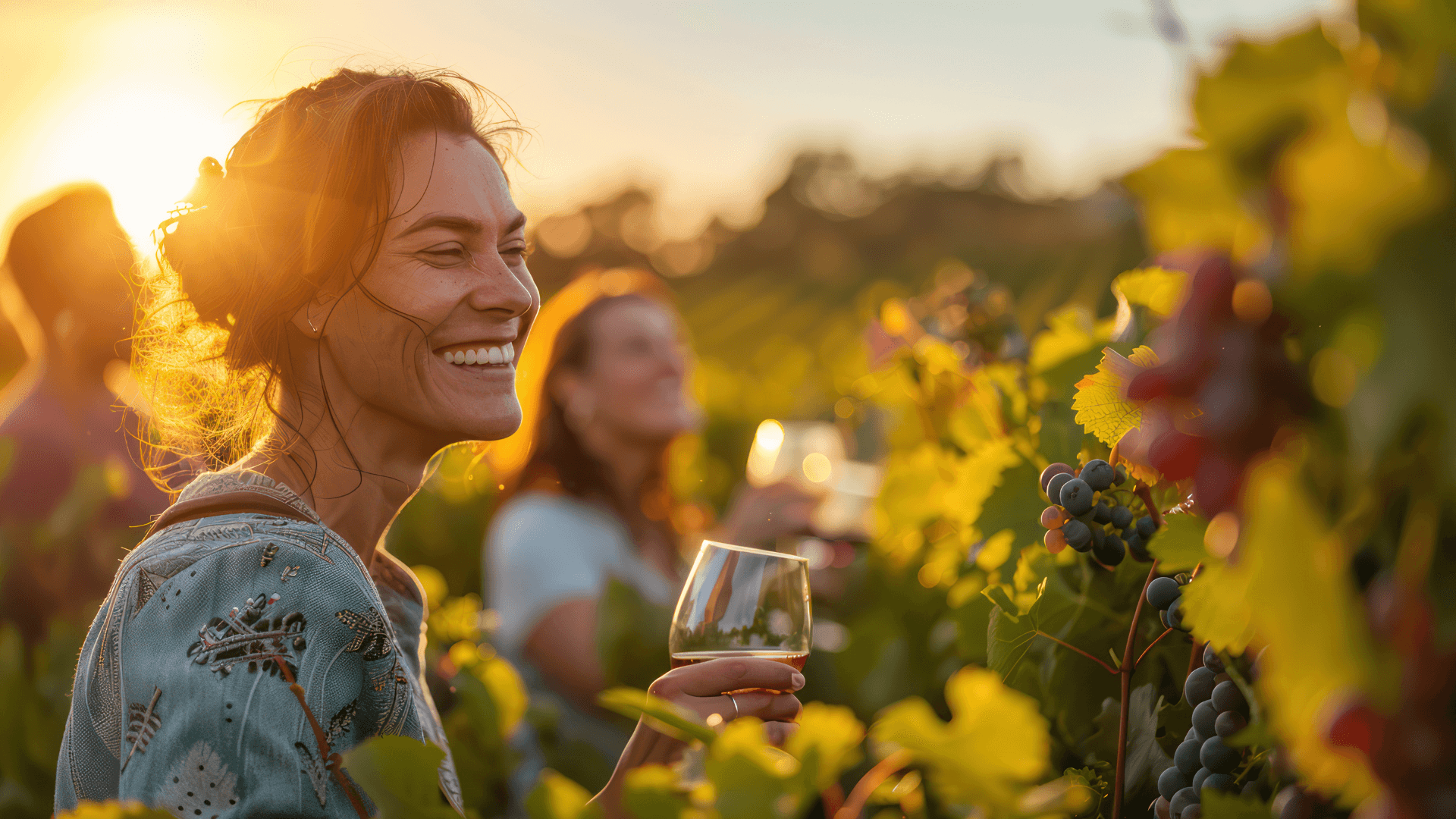
Dates: September
Type: Cultural festival
Although "Dürkheimer Wurstmarkt" translates to English as the "Bad Dürkheimer Sausage Market," it is a wine festival, not an event dedicated to sausage. The name "Wurstmarkt" is linked to the large number of sausages that were sold during the festival back in the day. The name stuck, even if the festival has evolved from its first edition in the 12th century.
Visitors can enjoy a unique display of more than 150 types of wines from local vineyards. It is one of the world's largest wine festivals. It combines the entertainment of a festival with the culture of wine and traditional German dishes such as sausages, roasted meat, and other local delicacies. Other than wine tasting, there is live music, dancing, and singing. Visitors can enjoy fireworks for two evenings of the festival or go up the huge Ferris wheel for a stunning view.
Tag der Deutschen Einheit (German Unity Day)
Date: October 3
Type: National public holiday
German Unity Day commemorates the reunification of East and West Germany in 1990. It is a federal public holiday, and people can attend celebrations countrywide. Unlike most countries, where the main festivity is held in the capital city, Germany assigns a host city every year.
The ceremony opens with an official speech and is followed by cultural performances and activities linked to German history and unity. Traditional dishes and drinks are a big part of the festivities, as well as exhibitions showcasing the history and unity of Germany.
On Tag der Deutschen Einheit, Germans reflect on the fall of the Berlin Wall, their history as a nation, and the unity of their people. The celebration is a statement of unity and peace.
Martinstag (St. Martin's Day)
Date: November 11
Type: Cultural celebration (honors St. Martin)
St. Martin's Day originated around the 4th century. It honors a former Roman soldier who earned the title of Bishop of Tours. Legends say he became famous for cutting his cloak to save a homeless person from freezing to death. A custom is to eat a goose on Martinstag. The tradition is inspired by medieval times, when people would pay their tax with a goose on November 11. Another theory is that a flock of geese revealed St. Martin's location, who was hiding from the people who wanted to appoint him a bishop. Nowadays, the traditional goose is often substituted with duck.
Children make lanterns in preparation for the holiday. On Saint Martin's Day, they march, accompanied by adults, with their lit lanterns, singing lantern songs. The largest procession of this sort is held in Kempen, in Cologne. It starts in the evening, with a Roman soldier riding a white horse, followed by around 4,000 participants. The celebration usually culminates with a bonfire. After that, children go around singing. The process is somewhat similar to the trick-or-treat Halloween tradition in the USA, as the hosts reward children with sweets or money.
Note: St. Martin's Day is also celebrated in Austria, celebrating the end of the year for wine growers. The event features art exhibitions, live music, and, of course, wine tastings. Similar festivals are held in the Netherlands, Belgium, and Scotland.
Buß- und Bettag (Day of Repentance and Prayer)
Date: Movable (the Wednesday before November 23)
Type: Regional public holiday (Saxony only)
"Buß- und Bettag" is a day of reflection celebrated in parts of Germany and marked with church services. It used to be a public holiday for the entire country. Nowadays, the State of Saxony is the only one enjoying a day off. In Bavaria, schoolchildren have a day off. In Baden-Württemberg, Saxony-Anhalt, and Saarland, there is a ban on dancing, which highlights the solemn character of the holiday.
"Buß- und Bettag" dates back to the Roman Empire before the 4th century. During harsh times, the government asked people to repent for their sins and pray, seeking divine favor. Despite its Protestant history, Buß- und Bettag became a religious holiday acknowledged by the church. To this day, it is a quiet day, inviting Germans to reflect. There are no festivals or fireworks.
Learn German with FunEasyLearn

Learning German can feel daunting. Think of all the der-die-das guessing games, case endings, and compound words longer than a Berlin winter. Those challenges demand more than memorization. On top of that, focusing is increasingly challenging in a world constantly fighting for your attention. Enter FunEasyLearn - your pocket companion to learning 34 language courses, including German. The language-learning app is a game-changer for learners. Here's how it makes all the difference:
📇 Informative Flashcards
Forget cramming articles mindlessly. Learn with a system that shows you the article (der, die, das) together with the noun. You'll never second-guess "das Mädchen" again. Help your brain record a wealth of information on a new word with visually appealing cards in an infographic style.
🤿 Immersion
Dive into real-life situations by learning vocabulary in context. Listen to native speakers to acquire correct pronunciation and intonation, whether you need to order a Brötchen or debate a topic. Build fluency in German one word at a time.
🎮 Fun Educational Games
Why rely on outdated methods when you can learn a language by playing? Over 30 games designed by linguists and ed-tech experts blend education and gamification with FunEasyLearn. Transform drills into dopamine hits with rewards and achievements. Retention becomes almost effortless.
An offline mode allows you to learn anywhere, anytime. Learning is at your fingertips, whether on your daily commute, hike, or 10-minute coffee break. On top of that, the zero-ads policy helps you achieve the level of focus necessary for learning.
FunEasyLearn is based on the lexical approach to language learning. In a nutshell, it prioritizes high-frequency words, phrases, and expressions. That way, language learners start building a practical vocabulary from day one. Millions of users love FunEasyLearn's bite-sized lessons, gamification, and the great results they have.
Ready to learn German?

